TR’s 20 Best Comics of 2014
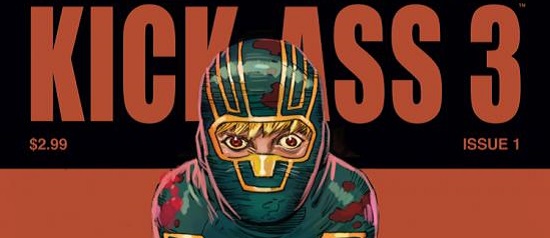 |
| Marvel Comics |
This past year has been an excellent one for comic books. The explosion of digital comics has lowered barriers to entry, and raised quality across the board. Picking out the best comics that came out in 2014 was an immensely difficult task, leading to a non-exhaustive list of 20 really awesome books that I’d love to argue about.
A brief word on the selection process: there were no rules. I just put whatever I wanted on there because I AM YOUR COMICS GOD BWAHAHAHAHAHA.
Seriously: on this list, you’ll find single issues, graphic novels, runs, and collections. The rules were:
1. I favored full stories unless one particular issue stood out.
2. The book has to check off at least two of three: good, interesting or unique.
3. It can’t just be 20 Image books, even though I could have easily made that and nobody would have flinched. Image has been incredible this year.
4. I have to trick you with the banner image.
For those of you expecting Kick Ass 3 to be on the list, leave.
20. Superior Spider-Man #30 (Marvel Comics)
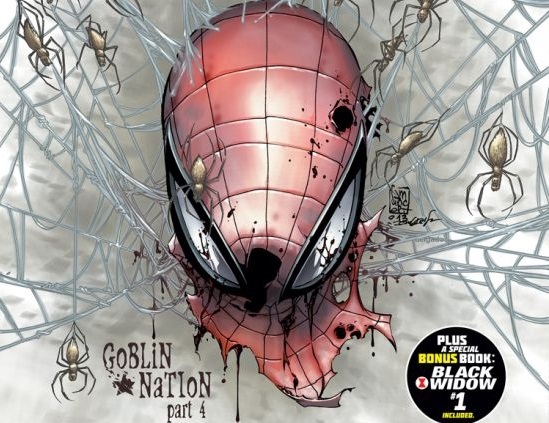 |
| Marvel Comics |
Back before Thanksgiving, Ta-Nehisi Coates (a pretty thoughtful writer on social and political issues, and a hopeless Marvel zombie prone to extended fits of livetweeting his Marvel Unlimited addiction) and Jeet Heer (a Canadian journalist prone to writing leftist dissertations in 140-character chunks) got into a conversation about why Spidey’s villains seem less operatic than others in the MU. The conclusion they came to was that Ditko’s fanatical objectivism allowed for no shades of grey in villains – no nobility like Doom, no “doing the wrong thing for the right reasons” like Magneto, no majestic savate leaping like Batroc. Superior Spider-Man #30 did a lot to change that.
As the real culmination of Dan Slott’s “Doc Ock and Spidey switch bodies” story, this issue had Octavius sacrifice himself in Peter Parker’s head in order to save the lives of people he had come to love in his time impersonating Spidey. It was really well-handled; a very emotional moment for Otto and for the reader (and probably for Slott as well). Normally, “Doctor Octopus talks about sex. A lot.” as a story pitch would have made me light my eyes on fire, but this issue was a fitting payoff to a storyline I enjoyed a lot more than I ever expected to.
19. Ragnarok #1 (IDW Publishing)
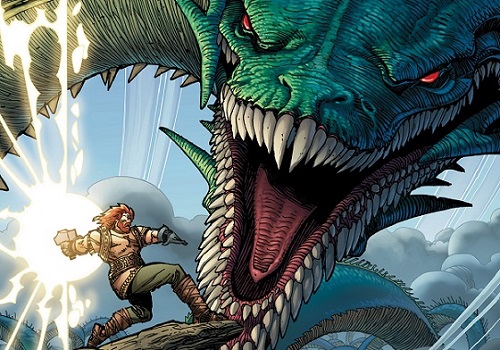 |
| IDW Publishing |
Is it possible for the guy who wrote the most well-regarded Thor run of all time to be somehow underrated? Because Walt Simonson is amazing. Not just for the fact that he’s been in the business forever and he hasn’t succumbed to the old-creator disease that makes one shriek about the lack of originality in cape comics while writing porny Disney Princess fanfic or hurl racial slurs at actresses from the relative safety of Barad-D?mbass. He’s also an artist who hasn’t stagnated at all as he’s aged. Take a look at the two-page spread from the first issue of Ragnarok . That art would stand up to anything he drew when he was making Thor. If you tell me your first reaction to that page is anything OTHER than “holy shit I’ll take three copies,” I’ll tell you you’re a liar.
18. Lumberjanes #1-8 (BOOM! Studios)
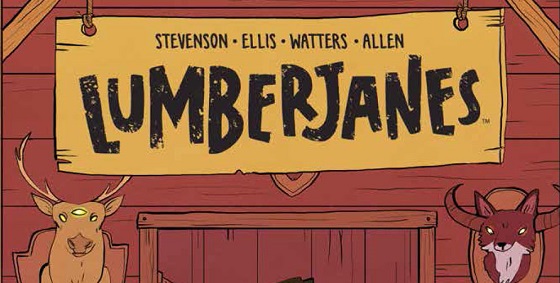 |
| BOOM! Studios |
Some intrepid commenter want to photoshop up “Troi…tell SlyDante he was right” over dying Vader’s face?
Lumberjanes is an incredibly fun camp story that brings me back to being 12 at Boy Scout camp for the first time, and then throws you into a ridiculous, hilarious story about Greek gods and merit badges. I especially appreciate the fourth issue, which should have been called “Inverse Brothers.” The critically acclaimed game was about, if I remember correctly, how all girls are spiders who will eat your family if you love them. In Lumberjanes #4, the penalty for showing the slightest interest in what a boy is saying is that they turn into bloodthirsty neat-freak zombies. I will be purchasing this original artwork printing a black and white copy of the page at my day job to tape to the wall of my niece’s bedroom.
17. Robert Moses: The Master Builder of New York City (Nobrow Comics)
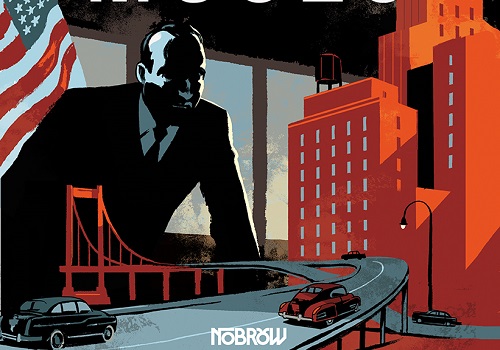 |
| Nobrow Press |
A biographical comic about the man who’s responsible for the modern layout of New York City immediately hits two of the three necessary criteria for the list: it’s certainly unique, and Olivier Balez’s art is fantastic. It captures the scope of the work Moses did in the city, and even if the writing glorifies an asshole who deliberately built the bridges low on the Grand Central Parkway to keep Spider-Man from getting to Forest Hills on top of cars, that’s still important.
One of the coolest non-comics things I read this year was this: a plan to fix LaGuardia Airport, which Diamond Joe Biden called a third-world shitpit (rough paraphrase). It’ll never happen, of course, but that story’s very existence is proof of the value of dialogue around urban planning, dialogue that this Robert Moses book can help stimulate among some very intelligent, very creative people in the comics-reading universe.
We’re facing an overwhelming series of problems from the changing nature of how we work and where we live, and so many of them revolve around infrastructure. If this book helps generate interest in urban planning or design or transportation infrastructure systems from anyone – children, programmers looking for second careers, unemployed college grads looking for a way to pay down crippling student loan debt – then it’s done a wonderful thing, even if it doesn’t have the same view (OR BASIS IN FACTUAL REALITY I thought but failed to not type) that I do. And now I can’t stop thinking about Robert Moses Magnum, who has the power to chill any pool just by looking at it.
16. Batman & Two-Face #28 (DC Comics)
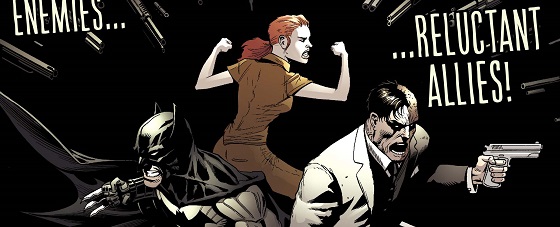 |
| DC Comics |
I can’t believe this wasn’t a bigger deal when it happened. This capped off Two-Face’s only string of appearances in the New 52 with him committing suicide, following an issue that is probably one of my favorite Batman single issues of all time. The flashback scene showing Bruce introducing Gilda and Harvey is incredibly effective, and Gleason’s art, showing Harvey falling apart as he loses arguments with Bruce and the Commissioner, is just amazing.
Gleason and Tomasi have had the chance to write Bruce Wayne as a father, both learning to be one and grieving the loss of his son. But their work this issue showed Bruce as a friend, and it’s the best that they’ve done so far. I went back to reread this issue while putting this list together, and I’m still surprised at how emotional I get, 10 months removed and knowing what was coming. Of course, I cry when Flash and Detective Green hug man hugs, so that may not be the best gauge.
15. Kinski (Monkeybrain Comics)
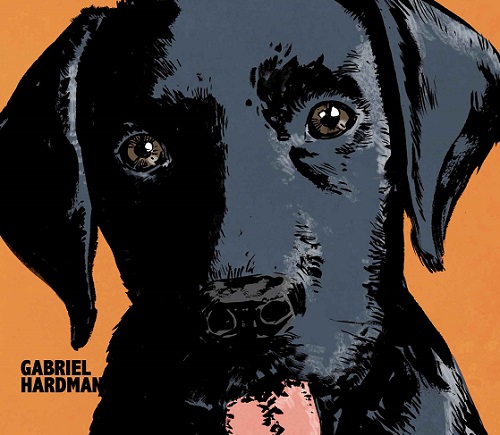 |
| Monkeybrain Comics |
I’m really surprised at how much this one stuck with me, but I can’t stop thinking about it. It’s a combination of two things: one, the inking. With the transition to digital production methods, you just don’t see brushwork like this anymore. Kinski is more like a series of black and white watercolor paintings than drawings. Especially for a digital-first comic, that’s incredible in concept, and Hardman’s execution is somehow better than I can describe it.
And two: I’m a completely-in-the-tank dog person now, so a story about a guy being taken with a nice dog is like a video of a husky mix getting 3D-printed legs and being the happiest little guy around isn’t he?
Jesus, I’m gonna cry a lot before this list is done. I’ll just mark the books that made me cry with an asterisk going forward.
14. Shamanism (Humanoids)
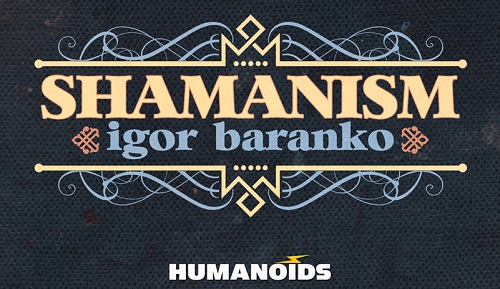 |
| Humanoids |
What got me about Shamanism is how incredibly dense it was. It folded back in on itself as often as a Morrison book. But unlike a Morrison book (and remember, I’m over the moon for the guy’s work), there isn’t some grand point here about the medium or about the power of fiction or how underground culture turns into a religion or how we should accept streets for what they want to be. Baranko used mind-bending sci-fi tropes and stunning art and colors to tell a love story. A very good love story, with only one or two people bludgeoned to death.
13. X-Men Legacy #24 (Marvel Comics)*
 |
| Marvel Comics |
“Are you ready to come to terms with yourself?”
And thus ended the weirdest X-Men run of all time. Simon Spurrier spent, let’s say, 2 years (stupid double shipping Marvel) taking the most powerful character in the X-universe, the catalyst for two enormous shakeups of that mythos, and literally undid him. In the process, he told a stealth love story. Legion and Blindfold were, for a little while, my favorite couple in comics. They were sweet and deeply in love. That emotional connection added a ton of depth to the entire story.
Together with Tan Eng Huat on art and Mike Del Mundo drawing the best covers in all of comics, Spurrier gave us some of the most creative and hilarious super powers ever (the Origamist!); and he gave the world one of the most positive depictions of a person struggling with mental illness in the history of comics. Legacy is still my favorite work of his because, as you’ll see as the list goes on, the feeling that this was personal to the creators is incredibly important. Even though, several months later, a Spurrier-written X-book had Dr. Nemesis rightly and justifiably threaten to kill someone for speaking ill of coffee.
12. Uber (Avatar Press)
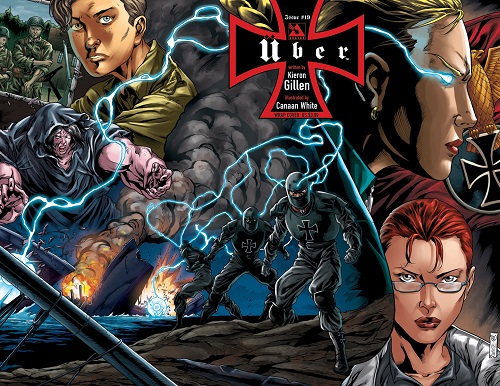 |
| Avatar Press |
As I mentioned when I reviewed Uber, this comic hits so many perfect nerd notes for me that I can’t imagine what would keep it out of a best of list. It’s a thoroughly researched, intricate, thoughtful, smart look at a trope and a subject matter that would be just explosions and cackling glee in the hands of a less capable writer. Kieron Gillen writes a ton of incredible stuff, but Uber gets me excited to go to the shop. I’ve written that sentence five different ways, and I can’t figure out how to not make it sound vaguely, uncomfortably sexual. I’m sorry.
11. Zero #9 (Image Comics)
 |
| Image Comics |
Zero is an espionage story with a series of one-offs following an agent in a future clandestine service. Written by Ales Kot, each issue is drawn by a different artist, and colored by the gifted Jordie Bellaire. The book is modular, telling out of order snippets of the story to give a full picture of Agent Zero’s life.
The whole thing is excellent, but issue 9 stands head and shoulders above the rest of the series because of how heartbreaking it is. Bellaire’s colors draw an artistic line through the entire series, but she changes styles to fit the artist to excellent effect. This issue shows Agent Zero’s birth, the death of his mother, and how his handler had his heart ripped from his chest (figuratively, though that is something that could also literally happen in this series). Tonci Zonjic’s art is great for this story and going back and forth between the times with Roman and Marina and Roman’s weapons dealer professional life; it looks a little like Herge at points. Amazingly enough, I didn’t cry when I read this issue. The room did get super dusty at the blowie scene in issue 11, though.
10. She-Hulk (Marvel Comics)
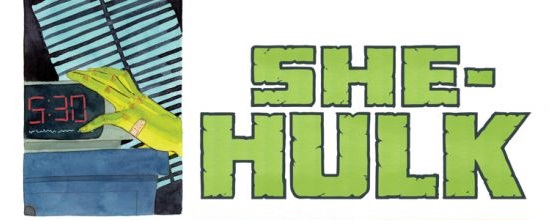 |
| Marvel Comics |
I have a confession. The Marvel stuff that I really, really like? Only rarely does that actually find its way into my reviews, because I’d rather wait for it to come out on Marvel Unlimited than jump ahead and spoil it to review it. That’s why I’ve only mentioned my love of Charles Soule and Javier Pulido’s She-Hulk in passing so far, because I’m about 5 issues behind. But this book, which started in February, has been one of the best surprises all year. Soule, an attorney himself, is taking “write what you know” and turning it into a fun, hilarious book. Pulido’s art is fantastic, perfect for the tone of the book. Angie Huang, the baddest paralegal in all of comics, is not only the character find of the year, but also a sign that Soule the Comic Writer knows what side Soule the Lawyer’s bread is buttered on.
9. Wytches (Image Comics)
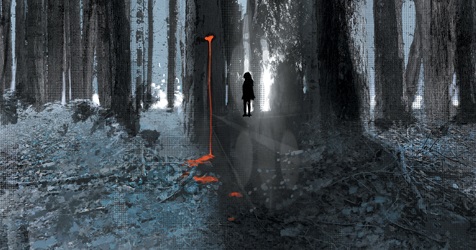 |
| Image Comics |
It’s hard to write about this series a third time without seeming gratuitous. There are only so many ways I can say that Jock is a gifted artist and designer, able to shift from action to Diary of a Wimpy Kid to moody horror with ease, and within a few pages of each other. Or that Matt Hollingsworth is part of a revolution in comics and pushing the edge of what colorists do for storytelling with every issue. Or that Scott Snyder is our generation’s Stephen King: able to evoke a time and a place with the same ease, and his voice makes his connection with his audience so effortless. One of the things that really makes Wytches so outstanding, though, is how personal it is. You see it in the interview we did with Snyder – with the exception of maybe Deadly Class, there isn’t a more personal comic book being published right now. Snyder and Jock and Hollingsworth are putting all of themselves into this comic, and we the readers are reaping the rewards. The best part? I can’t wait until Charles Rooks’ comic inside the comic goes full Something Wicked This Way Comes.
8. Hip Hop Family Tree vol. 2 (Fantagraphics)
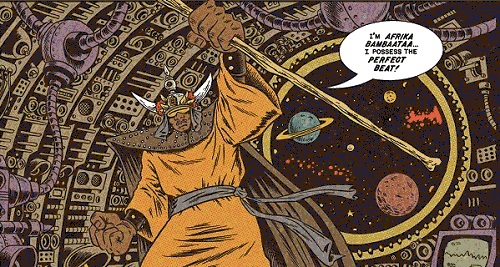 |
| Fantagraphics |
Briefly touched on in our holiday gift guide was Ed Piskor’s incredibly dense history of hip hop music, now in its second volume. History done poorly can be so dry and tedious, even a history of something as vibrant as the birth of rap. But Piskor is clearly having the time of his life making this. There is so much care put into making sure that every scrap of relevant information is highlighted and fitting the pieces together of a narrative that goes from LA to Germany (rappers love Kraftwerk).
This comic also counts as “important,” and not just because of how influential hip hop has been on our society since its creation. With the music industry being atomized by poor business decisions and the Internet, the barrier to success is huge. Looking back on a time and a group of people who had sound systems they cobbled together themselves who went on to spawn an entirely unique genre of music and become phenomenal international successes, I bet, has some serious instructive value at this time. Hip Hop Family Tree ALSO serves as a powerful reminder that Ice-T wasn’t always an SVU detective.
7. Afterlife with Archie (Archie Comics)*
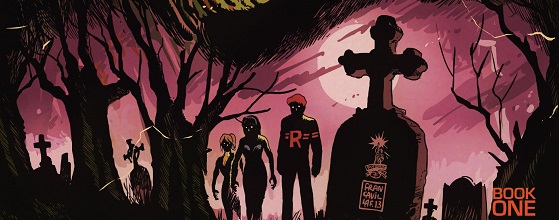 |
| Archie Comics |
Afterlife with Archie has no business being this good. What started out as a one-off joke variant from Francesco Francavilla turned into the best zombie story I’ve read since World War Z. Francavilla deserves a tremendous amount of credit for his (as always) amazing art work, but the reason this book ranks so high is Roberto Aguirre-Sacasa’s writing. There are so many story beats in the first 5 issues that, if not handled perfectly, would have been trite or tired or nakedly emotionally manipulative. But they were incredible: nothing schmaltzy or overbearing, just genuine, earned scares and sadness. I can’t believe how good this comic is.
*The scene with Archie and Vegas. Don’t tell me you didn’t too.
6. Through the Woods (Margaret K. McElderry Books)
 |
| Margaret K. McElderry Books |
What an insane year for horror comics it’s been. Four of the top ten are horror books, and there’s an entire set of comics that didn’t quite make the list, but are still exciting, every-week reads. Emily Carroll’s Through the Woods stands out because of how well she uses pace and slow, creeping dread to scare the bejeezus out of the reader. It’s fantastic, as are her webcomics, which push the medium as far as you can and still have it be recognizably comic art. I can’t wait to read more from her, even if she decides to push print comics as far as her web work and make a book full of surprise vibrating-gift-card pop up scares.
5. Battling Boy: The Rise of Aurora West (First Second Books)
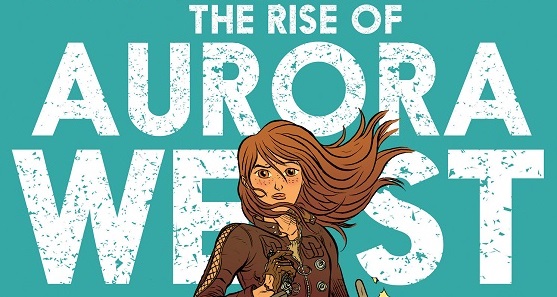 |
| First Second Books |
Aurora West is the kind of comic you use to convert people to comic book fandom. It’s so engaging, so clever, so much fun to read and so imaginative that anyone who reads it will be hooked immediately. I was wary when I found out that Paul Pope would only be co-writing it, because his art was such a key part of what made Battling Boy great. Fortunately, in working with JT Petty and David Rubin, he may have actually improved on the original. Rubin’s art is close to what Pope did, but slightly tweaked in a way that enhances the weirdness of the city before Battling Boy arrives, almost MAD Magazine-y. This was a really fantastic build out of an entirely new story universe.
4. Ody-C #1 (Image Comics)
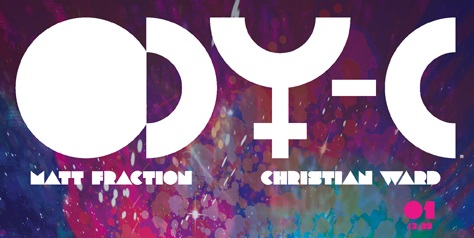 |
| Image Comics |
The single most ambitious thing in mainstream comics this year is Christian Ward and Matt Fraction’s 8-page fold out map/guidebook explaining the universe to kick off Ody-C. More impressive is the fact that Fraction and Ward use the rest of the first issue to try and out-crazy it: every new idea being introduced is an awesome high concept piled on top of three other awesome high concepts. Let’s gender swap all the characters from the Odyssey! And let’s set it in space, and make a map of the galaxy that matches the geography of Peoloponnesus! And let’s write the whole thing in the same meter as Homer! And make the only guy a slave in a gimp suit! And make the ship look like Spock’s vagina! All of these are real things, and all of them are incredible.
3. Memetic (BOOM! Studios)
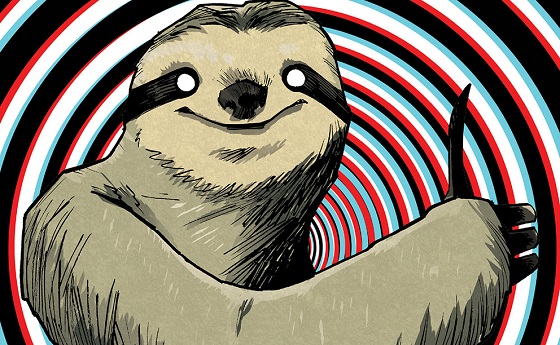 |
| BOOM! Studios |
Every other comic in the top 5 has some sort of pedigree that allowed me to at least see its spot on this list coming – I’m a sucker for updated hero’s journey classics; I read Battling Boy so much that it’s almost falling apart; and the top 2 books were either historically significant or something I’d been looking forward to for almost a decade. Memetic, on the other hand, was a book that I found because I was scanning the Boom solicits for a #1 or a new arc to review. Holy socks, I’m glad I did.
Tynion and Donovan tell a story in Memetic that starts out fairly standard – it’s incredibly well done, but at its base, it starts out like a millenial version of Stephen King’s Cell – and in the final issue becomes a really sad musing on loneliness. All of the horror affectations remain, but while the intellectual core stays “cool sloth thumbs up bro dot gif,” the emotional core of the story is closer to a Twilight Zone thinker than the blood-gushing-from-the-eyeballs disease/zombie story it began as. That’s what kept me coming back. The sloth was, I mean.
2. Here (Pantheon Books)
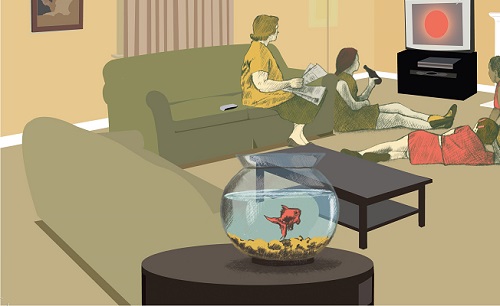 |
| Pantheon Books |
Here is a magnificent artistic accomplishment. It sounds reductive to call it a follow-up to six pages in an indie anthology 25 years ago, because those six pages changed the visual language of comics. They helped artists break out of traditional panel structures, showed how to screw with the passage of time, increased the information density every panel could contain and were endlessly hyped and passed around. Richard McGuire blows the original story out into a full, 300-page epoch-spanning story about one corner of a house and everything that happens in and around it. It’s moving, beautiful, incredibly layered, emotional, and multi-genre: it has elements of historical fiction and ridiculous sci-fi, once (I think) on the same page. It was also the hardest not to make easy jokes about: Here here gave us a chance to put a metric asston of cheap puns here, and we at Topless Robot Hereby declare that they’ll all be saved until we get a sequel here; Here 2: There.
It doesn’t feel any better to have let that out.
1. The Multiversity: Pax Americana #1 (DC Comics)*
 |
| DC Comics |
*Because I CAN’T BELIEVE IT FINALLY CAME!
Honestly, until Thunderworld came out, I had this at number 2 (HA HA HA, number 2). A lot of the same things that I said about Frank Quitely’s art also apply to McGuire’s. Hell, a lot of the things I said about Frank Quitely’s art happened because of McGuire. But it’s not just the intricacy of the panel layout that makes Pax Americana the best comic of the year. It’s the total package.
Everything Grant Morrison writes is like a 156-dimension snowflake: meta and constantly folding in on itself. But the one constant underpinning of his DC work has been a hopefulness, an insistence that if comics just took themselves out of the grim and gritty hole of the ’90s and started being brighter and more positive they’d be alright. Pax Americana has it too, even though it’s mostly in contrast and largely a condemnation of Watchmen. Captain Atom is the series’ Chekhov’s gun, and even Peacemaker is guided by a blind faith and a belief that he can make the world better. Plus I like unfolding the 156-dimension snowflake.
At this point, with the energy he’s expended on shouting “Don’t read too much into this,” I almost expect Ultra Comics to be fumetti of Grant crawling out of a comic and shooting me in the back of the head while I read Multiversity #1.
Previously by Jim Dandeneau
10 Things We Learned from Scott Snyder
TR Holiday Gift Guide: 20 Comics-Related Gifts for All Levels of Fandom
12 Other Events Marvel Should Revisit for Their New Secret Wars
TR’s 14 Biggest Highlights from NYCC
4 Reasons We Shouldn’t (and 4 Why We Should) Get Excited About the Marvel/Kirby Settlement
